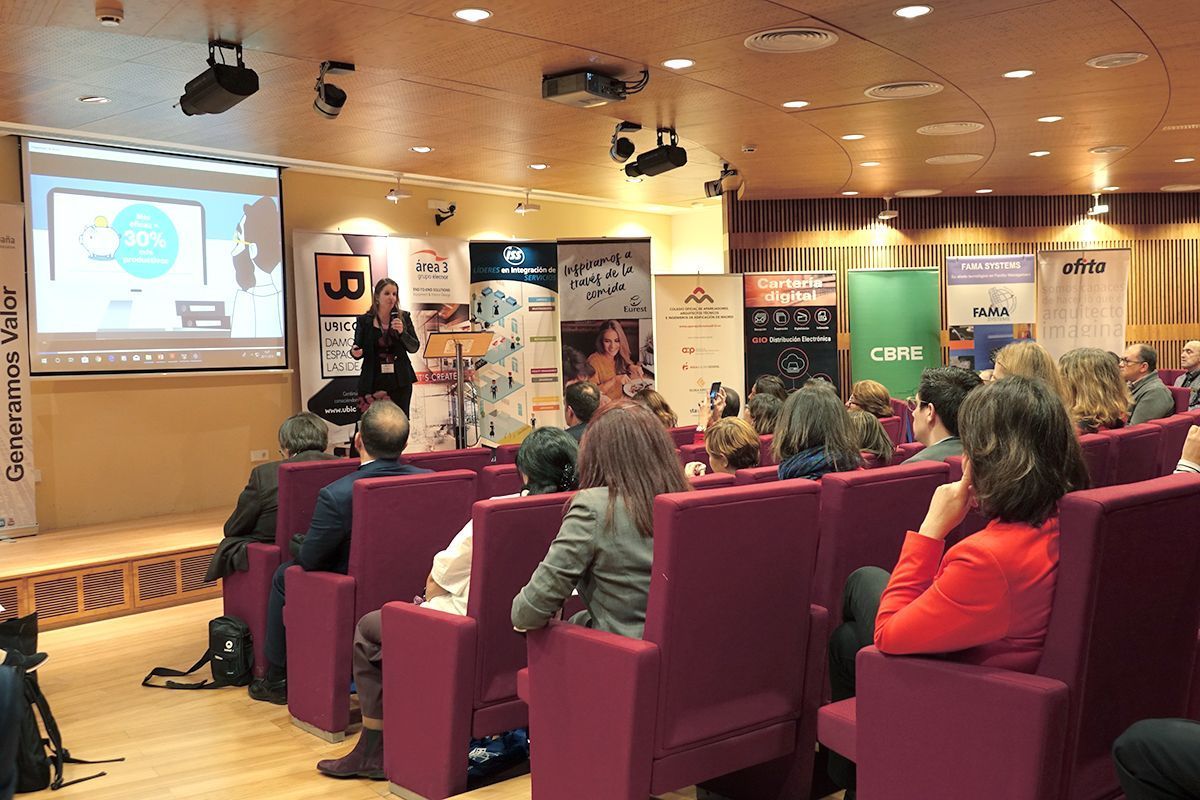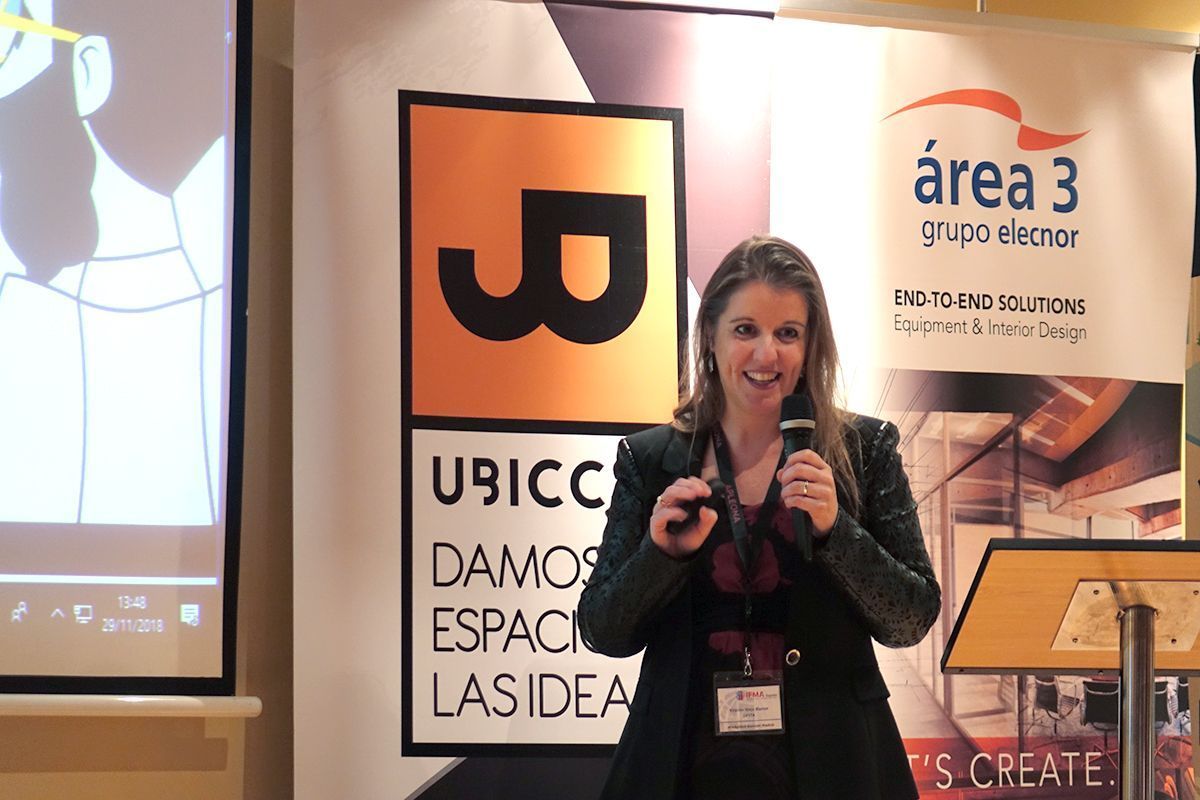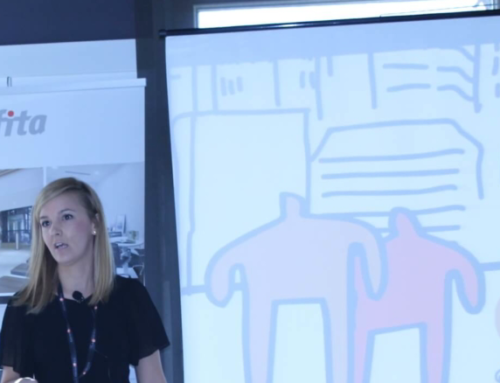Ofita and its “happy workplaces” at Workplace Summit 2018
Ofita has presented its study “Happiness at work” at the Workplace Summit 2018 which took place in Madrid and Barcelonawith the attendance of the different sectors associated with the design of working environments. According to this study the employees most committed with their work are the happiest and therefore respond being 30% more productive.
Benefits associated to happiness
Exhibition of Ofita at Workplace Summit
Benefits are not only observed in productivity. It is also evident that happy employees can increase creativity in 86% and improve the health index up to 20%. In this context, it is important for companies to be aware of the advantages of turning into ever comfortable places where both parties, employers and employees, can achieve positive results to their mutual benefit; a trend which is expected to gain more traction in the future when millennials will hold managing positions. So much so that over 90% of actual clients of Ofita take into account the happiness of their employees in the design of its offices, while this percentage reduced to 50% 5 years ago and to 20% 10 years ago as explained at the Workplace Summit.
What do we need to be happy at work?
Flexibility, a good boss and a good work environment are three of the requirements for happiness at work. Indeed the design of the working places has a significant impact on the happiness of employees and for this reason, employers are ever more conscious of its importance.
Workplaces do not only have to satisfy basic needs of people but also their deepest emotional requirements. For example, according to the study presented at the Workplace Summit, 95% of companies concerned about the happiness of their employees have leisure/relax areas for their employees.

The ten commandments of the “happy office” by Ofita at the Workplace Summit
- Social and casual spaces. Given the changing nature of how, when and where people work, organizations require ever casual spaces where people can meet, make private calls or simply leave time for leisure and recreation. Agoras, leisure rooms, cafeterias, lounges….they encourage solid connections between people and ease the transfer of know-how. There is where employees feel comfortable; where they coexist, where different talents flow and where innovation ecosystems are created.
- Collaborative environments. Headquarters concerned about the wellbeing of their employees feature one thing in common: they combine concentration and open and collaborative areas and reduce the number of tables assigned to one person. Increasingly, offices are “non-territorial” with random stations. The reason is based on the promotion of teamwork, fellowship and common targets. This gains special relevance if we take into account that new generations consider common areas as a requirement of an ideal environment.
- A correct lighting. It has been verified that this has impact on the physical and psychological wellbeing of people and can become a cornerstone of productivity. This is why lighting can provide the necessary visual comfort to develop duties efficiently and to create an appropriate work atmosphere.
- Greater contact with nature and natural light. Wood, gardens and also the inside, the views and the open air spaces to take a break from the day are some of the new resources used by those companies that wish to give greater importance to nature at workplaces. This can also be encouraged with the incorporation of the biophylic design which focuses on the incorporation of aspects of the environment both in the architecture and in the decoration itself.
- Correct circulation of employees and occupational health. As most people spend around eight hours seating in front of the computer, it is necessary for the company to worry about offering spaces suitable for the correct circulation throughout the day. To favour greater comfort, this has to come with ergonomic furniture, this is, which can be adapted to achieve greater comfort and efficiency of the different duties and even adjustable tables so that the user can work either seated or standing. Without forgetting providing workstations with ergonomic chairs guaranteeing healthy positions throughout the whole working day.
- Air quality. Just by being aware of the importance for the human body of the air we breathe we understand that being concerned about improving its quality has to be a crucial aspect in offices. Something that eases this purpose is to rely on ventilation systems both natural and artificial and to incorporate plants which may generate oxygen throughout the day. Some studies have revealed that offices have plants which make employees feel happier, more concentrated and productive; One more reason to incorporate them.
- Noise isolation. Good bye to open spaces? Acoustic is among the main aspects people are not satisfied with. This is why organizations have to guarantee a good noise isolation system for open spaces. Moreover and above all, open spaces have to coexist with other closed spaces allowing duties requiring greater concentration or certain privacy such as for example, making telephone calls to a certain client. A good acoustic system can improve motivation in up to 60%.
- Homes come to offices. Until a few years ago, offices were much colder spaces basically decorated with chairs, files and tables. Today that paradigm has fortunately been left aside hand in hand with their “domestication”, i.e. making more reference to homes, where motivation, quality of life and satisfaction of employees increases. This is achieved with changes in the configuration and design of furniture to include mere details such as the placing of curtains, cushions and different decoration elements.
- Customized and flexible spaces. Work networks are being increasingly human attending the needs of each employee. Flexibility has a crucial role here, both with schedules and spaces and functions; this is, adapting the space and furniture to the requirements of employees to each time and activity.
- Towards a paperless office with an strategic use of colour. The premise is that if offices are physically organized, the employee will also be mentally organized. The employee will hardly develop its duties correctly if it does not have a nice environment where to feel comfortable. Some of the keys to achieve this objective go hand in hand with the reduction of paper in favour of the digital format, in addition to using colour strategically. Experts agree that spaces strategically designed depending on colour increase productivity and wellbeing of employees in addition to boosting greater brand communication.


